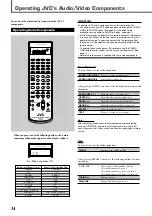
5. Electronic components of vehicles
5.1. History
For more than twenty years, vehicles and engines of all kind are provided with electronics
components more and more sophisticated.
Those are perfectly compatible with the use of a Booster in contrary to the old starting practices, still
too much used and extremely dangerous for vehicle electronics and for the health and safety of the
users.
5.2. Car manufacturers’ recommendations
Faced with the multiple requests from garage owners, some manufacturers have worked out a
process of intervention to follow if the battery fails that excludes any other form of intervention under
pain of loss of warranty.
It is, therefore, important to read the vehicle user manual before doing anything on a vehicle’s
battery.
Our Boosters perfectly match manufacturers’ requirements. None prohibits or advises against the
use of a battery or a release Booster.
5.3. High voltage surge
How can one damage or destroy one or more electronic components?
Answer: by provoking high voltage surges.
A high voltage surge is a small spark or a very powerful stray flash provoked by voltage differences,
short circuits or reversals of polarity, or again, and quite often, making electrical welds on vehicles
without disconnecting the battery or using a special Anti-Zap filter.
The small surges damage or destroy electronic components of board computers or ordinary logic
controllers.
Stray flashes and electrical welding, contrariwise, do greater damage.
If the Booster is used according to instructions, it is impossible to provoke a voltage surge.
A complete information about the electronic of vehicles is available on request.
6.1. My Booster…
6. Questions - Answers
A. Does not recharge anymore:
□
There is no current on the wall socket (230 Volt AC) on which you have
connected the charger
□
The recharge plug of the Booster is damaged (see page 44 – 4.1. (point 5))
□
The charger does not function any more
□
The batteries are sulphated, swollen or « cooked » and do not take anymore
the charge
B. Does not work anymore in 12V, either in 24V:
□
The internal fuse is blow
- 20 -
















































